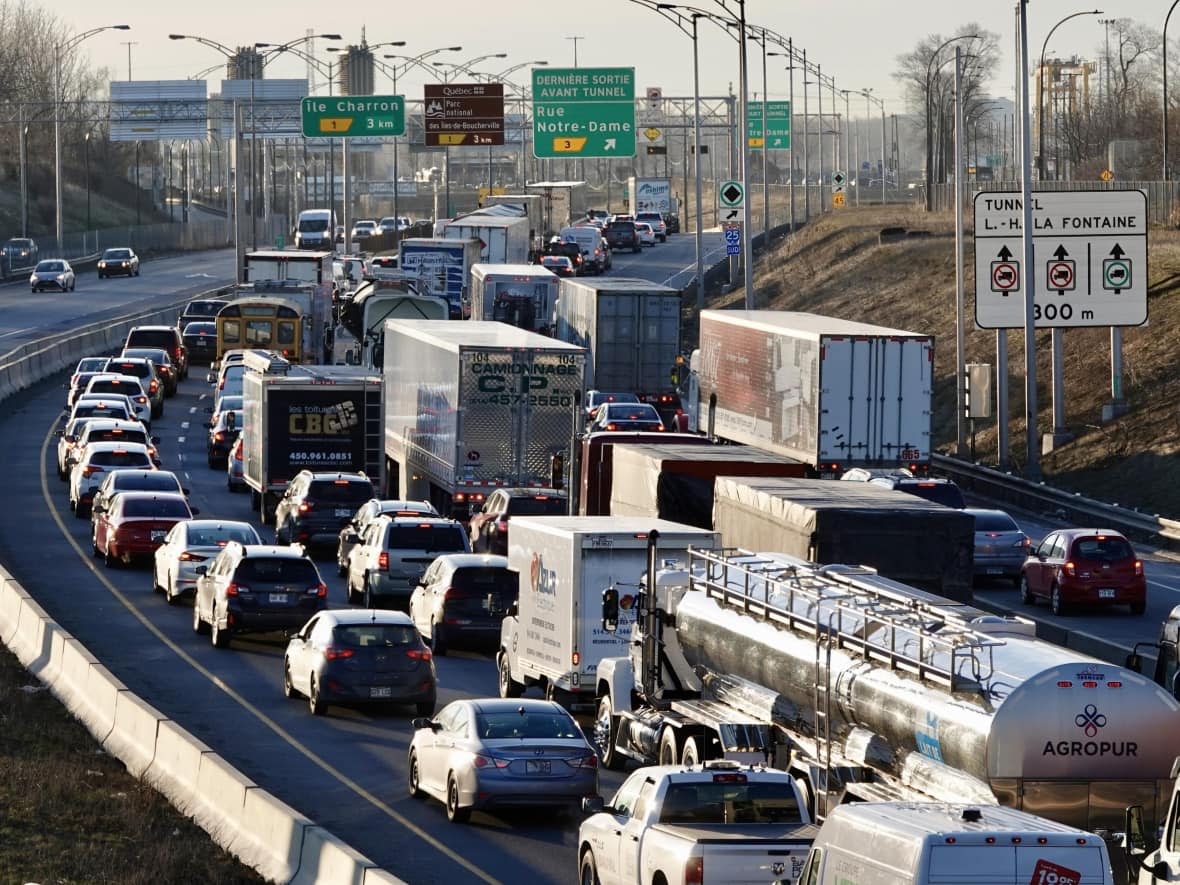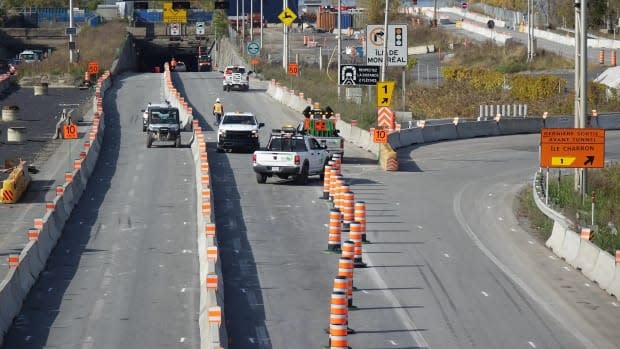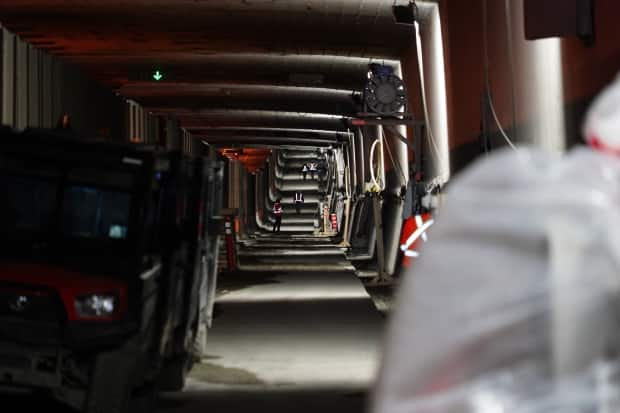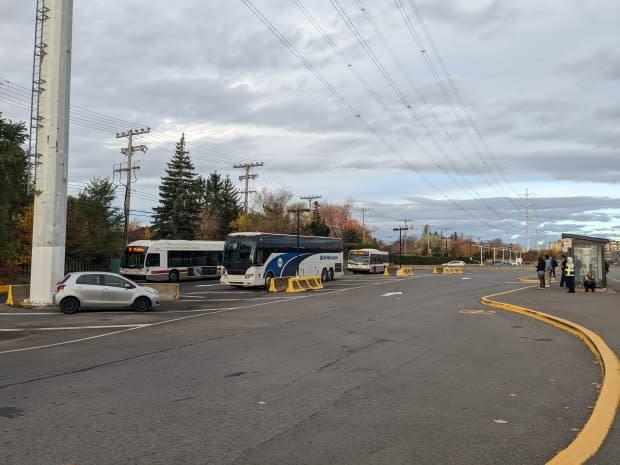Here are your best options to survive the La Fontaine tunnel closure

As of Monday, a vital link between Montreal and the South Shore used daily by 120,000 vehicles, including thousands of heavy trucks, will essentially become undriveable during rush hour.
Half of the six lanes inside the Louis-Hippolyte-La Fontaine tunnel will be shut down for three years in order for the Quebec government to carry out urgent repairs and make sure the structure can last another 40 years.
There will be two lanes open for drivers heading toward Montreal and only one for those heading south: It's going to be chaotic.
But as dire as the situation on the road will be in the coming weeks and years, you have options — even if they're not ideal.
Here's a breakdown of things you can do to possibly save a bit of time, and also, your sanity.

Traffic or no traffic, I have to drive
Many people who live on the east end of either Montreal or the South Shore are likely to test their patience and give the narrowed tunnel a shot. That is not recommended at all.
"People really have to look at their options and change the way they move around, either with public transit, by leaving earlier or later, working from home more," said Martin Girard, a spokesperson with Transports Québec, during an interview with Radio-Canada.
"[They have to] see what the options are to make life easier for themselves."
You can also try your luck and see if it's easier to get on and off the island by the Jacques Cartier and Champlain bridges, but you wouldn't be the first driver to think of that. It's expected the work on the La Fontaine tunnel will add to the congestion on the bridges.
If you're driving toward Montreal, there will be a reserved lane for buses, taxis and carpooling (at least three occupants in the vehicle) on Highway 20 between the municipalities of Sainte-Julie and Boucherville.
The province also has this interactive map to give people an idea of how long the wait time is before getting into the tunnel. There will also be signs on provincial roadways like Highways 20, 25 and 40.
WATCH | How traffic looked on 1st day of tunnel lane closures:
OK, never mind. What are my other options?
The short answer is, obviously, public transit.
At the very least, people who usually drive to get from point A to point B will need to consider a mix of driving and bus and Metro.
If you live on the South Shore, hundreds of park-and-ride spots have been added in Varennes, Beloeil and Boucherville, and there are already such lots in Sainte-Julie. There should also be spaces to leave your bike. From those locations, you can take shuttle buses that will get you to the Radisson Metro station in Montreal's east end.
But even those shuttle buses will need to get through the tunnel. The hope is that if enough people opt for transit, it will reduce the number of vehicles inching through.
Those shuttle bus rides are free. Until Nov. 27, shuttle bus riders will also get two free transit passes that can be used for public transit anywhere in the Montreal area.
Starting Monday, Montreal's transit authority (STM) is beefing up Metro service on the Yellow Line, which links the downtown Berri-UQAM station to Parc Jean-Drapeau and Longueuil. It will add an extra train — the equivalent of nine Metro cars — between 6 a.m. and 10:30 p.m.
"This addition will lead to 50 more departures per day in each direction," said spokesperson Justine Lord-Dufour, while specifying that it amounts to a 25-per-cent increase in Metro frequency.
A spokesperson for the Exo transit agency said there has been a recent increase in the number of travellers on the Mont-Saint-Hilaire line which links the South Shore to Central Station downtown.
Eric Edström says Exo is in talks with CN about adding more departures to the line. In the meantime, it will add an extra train car to the ones already on schedule as of Monday.
For a full list of public transit options being made available, including shared taxi lines in the Longueuil area and a water shuttle service, click here.
The water shuttle from Boucherville to the Old Port was supposed to end on Nov. 13. The province has decided to extend it until Dec. 11.
As for the bus routes, click here to find out the estimated travel times.

I don't drive. Why should I care?
If the traffic is as brutal as expected, more people might eventually opt for public transit. That means buses and Metro cars might be more packed. The STM says it's ready for it.
Using the week of Oct. 17 as an example, the STM's spokesperson told CBC News that traffic on Metro network is at about 69 per cent of the usual pre-pandemic capacity, so there is room for more riders.
Streets in and around the tunnel and bridges, like Papineau Street in downtown Montreal, could also become more congested.
In Boucherville, which is directly across the St. Lawrence River from east end Montreal, the mayor is concerned traffic could pile up on some residential streets as a result of the closures.

So, free public transit rides and a reserved lane for carpooling. That's it?
For now, yes.
On Wednesday, Montreal Mayor Valérie Plante said she was in talks with Quebec Transport Minister Geneviève Guilbault about finding more ways to encourage people to abandon their cars.
Michel Leblanc, the president of Montreal's chamber of commerce, had an idea: banning cars with only one person inside from entering the tunnel during rush hour.
Both Plante and Premier François Legault say they're open to the idea. Legault said he wants to see how bad the traffic is before adding new measures.
Transports Québec says teams will be monitoring the traffic situation as well as buses, trains and the Metro to see if more needs to be done to make the next three years as manageable as possible.
WATCH | Take public transit or sit in traffic forever? Commuters weigh in on lane closures:


